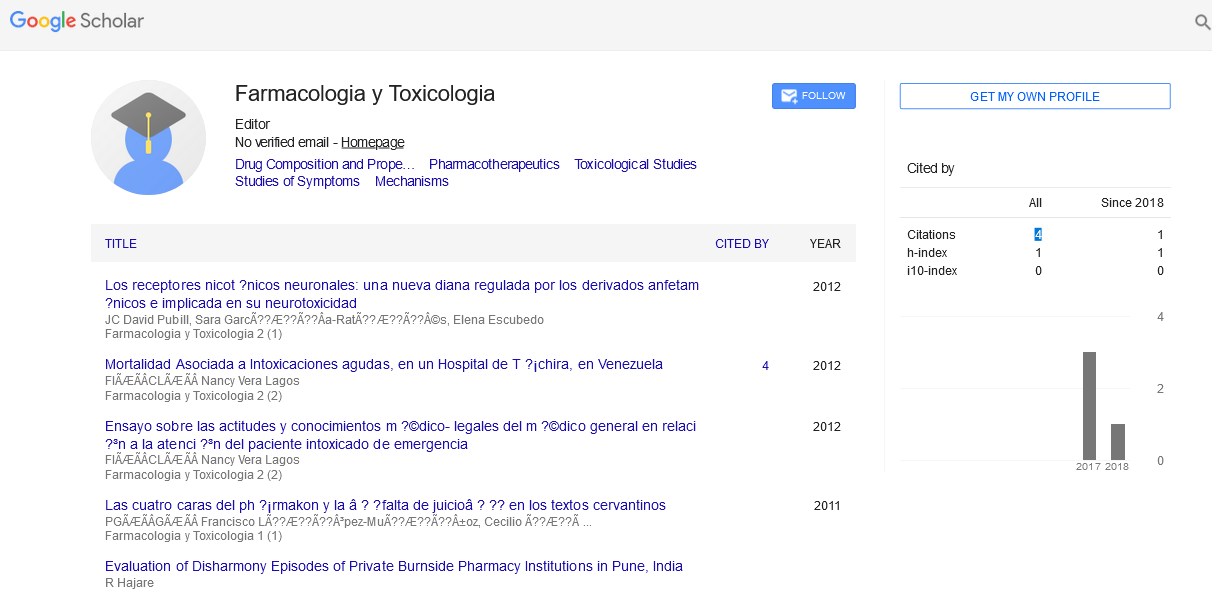Perspective - (2024) Volume 14, Issue 5
Bioavailability: Understanding the Proportion of a Drug that Enters Circulation
Eva Valdivia*
Department of Pharmacology, University of Harikopeo, Athens, Greece
*Correspondence:
Eva Valdivia, Department of Pharmacology, University of Harikopeo, Athens,
Greece,
Email:
Received: 07-Aug-2024, Manuscript No. IPFT-24-15130;
Editor assigned: 12-Aug-2024, Pre QC No. IPFT-24-15130 (PQ);
Reviewed: 26-Aug-2024, QC No. IPFT-24-15130;
Revised: 01-Oct-2024, Manuscript No. IPFT-24-15130 (R);
Published:
29-Oct-2024
Introduction
Bioavailability is a fundamental concept in pharmacology that
plays a critical role in determining the effectiveness of a drug. It
refers to the proportion of an administered dose of a drug that
reaches the systemic circulation in an unchanged form. This
measure is essential for understanding how much of a drug is
available to exert its therapeutic effects. This article delves into
the concept of bioavailability, its importance, factors influencing
it and its implications in drug development and clinical practice.
Description
The concept of bioavailability
Bioavailability is defined as the fraction of an administered
dose of a drug that reaches the systemic circulation and is
available to interact with its target receptors. It is usually
expressed as a percentage of the administered dose. For
example, if a drug is administered orally and 50% of it reaches
the bloodstream in an active form, the bioavailability of the drug
is 50%.
The concept of bioavailability is crucial because it influences
the dosing regimen and therapeutic efficacy of a drug. A drug
with high bioavailability will require a lower dose to achieve
therapeutic levels in the bloodstream compared to a drug with
low bioavailability.
Routes of drug administration and bioavailability
The route of drug administration significantly affects
bioavailability. Different routes can lead to varying degrees of
drug absorption into the systemic circulation:
Oral administration: Drugs administered orally must pass
through the Gastrointestinal (GI) tract and the liver before
reaching systemic circulation. This process is known as first-pass
metabolism. The liver metabolizes a significant portion of the
drug, reducing its bioavailability. Consequently, oral
bioavailability is often lower compared to other routes.
Intravenous (IV) administration: Drugs administered directly
into the bloodstream via intravenous injection or infusion have
100% bioavailability. This is because the drug bypasses the GI
tract and first-pass metabolism, entering systemic circulation
directly.
Intramuscular (IM) and Subcutaneous (SC) administration: Drugs given via intramuscular or subcutaneous routes are
absorbed into the bloodstream through capillaries. While they
do not face the same level of first-pass metabolism as oral drugs,
their bioavailability can still be influenced by factors such as
blood flow and tissue characteristics.
Sublingual and Buccal administration: Drugs administered
under the tongue (sublingual) or between the gum and cheek
(buccal) enter the systemic circulation directly through the
mucous membranes. This method can avoid first-pass
metabolism and may provide higher bioavailability compared to
oral administration.
Factors affecting bioavailability
Several factors can influence the bioavailability of a drug,
including:
Drug formulation: The formulation of a drug, including its
chemical composition and delivery system, can impact its
bioavailability. For example, extended-release formulations are
designed to release the drug slowly, potentially altering its
absorption rate and bioavailability.
Physicochemical properties: The drug’s solubility, stability
and permeability affect its ability to be absorbed. Lipid-soluble
drugs typically pass through cell membranes more easily than
water-soluble drugs, affecting their bioavailability.
First-pass metabolism: Drugs administered orally undergo
first-pass metabolism in the liver, where a portion of the drug is
metabolized before reaching systemic circulation. Drugs with
high first-pass metabolism have lower oral bioavailability.
Gastrointestinal factors: The presence of food, gastric pH and
gastrointestinal motility can influence drug absorption. For
instance, fatty foods may enhance the absorption of lipophilic
drugs, while a high gastric pH may alter the dissolution of certain
medications.
Measuring bioavailability
Bioavailability is typically measured through pharmacokinetic
studies. These studies involve administering a drug to a subject
and measuring its concentration in the bloodstream at various
time points. The data obtained helps in calculating the area under the concentration-time curve, which represents the total
drug exposure over time.
For oral drugs, bioavailability is often compared to
intravenous administration, which is considered to have 100%
bioavailability. The relative bioavailability of an oral drug is
calculated by comparing its AUC with that of an intravenous
dose of the same drug.
Implications for drug development and clinical
practice
Understanding bioavailability is crucial for drug development
and clinical practice. In drug development, bioavailability studies
help in optimizing drug formulations and determining
appropriate dosing regimens. Ensuring that a drug has adequate
bioavailability is essential for achieving the desired therapeutic
effect while minimizing potential side effects.
In clinical practice, knowledge of a drug’s bioavailability
informs prescribing practices. For instance, if a drug has low oral
bioavailability, a higher dose may be required to achieve
therapeutic levels or an alternative route of administration may
be considered. Additionally, understanding factors that influence
bioavailability helps in personalizing treatment plans and
managing drug interactions effectively.
Conclusion
Bioavailability is a critical parameter in pharmacology that
determines the proportion of a drug that reaches systemic
circulation in its active form. It influences the drug's therapeutic
efficacy and safety profile. By understanding the factors affecting
bioavailability and its implications, healthcare professionals can
make informed decisions in drug prescribing and treatment
planning, ultimately enhancing patient care and therapeutic
outcomes.
Citation: Valdivia E (2024) Bioavailability: Understanding the Proportion of a Drug that Enters Circulation. Farmacologia Toxicologia, Vol.14 No.5:
045





